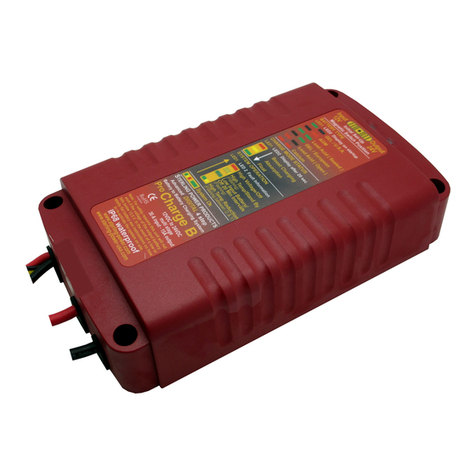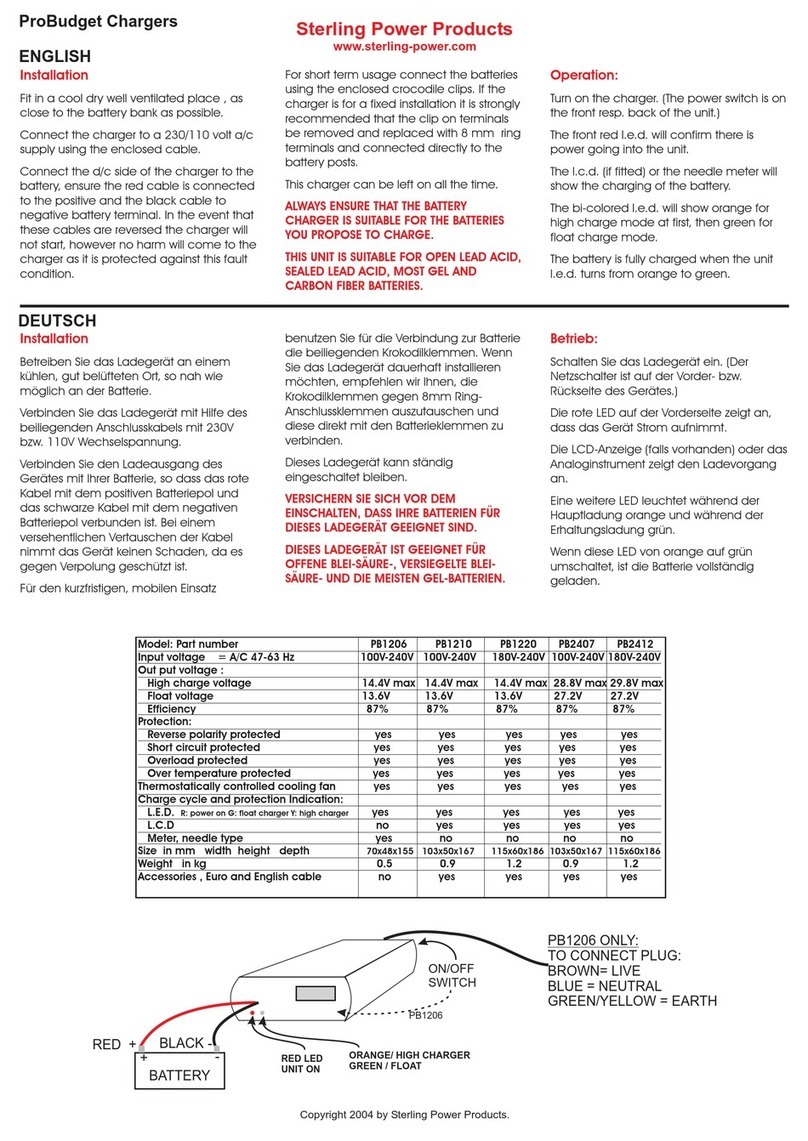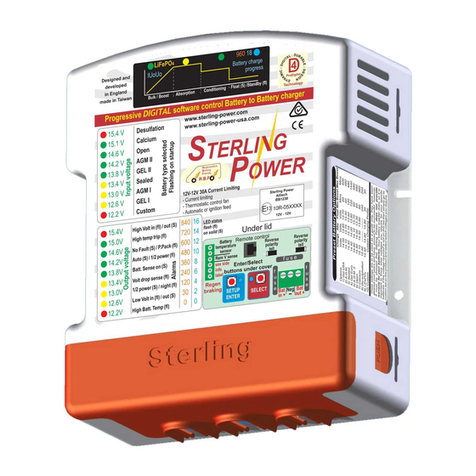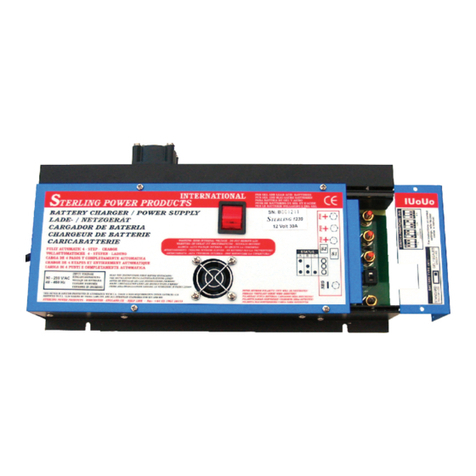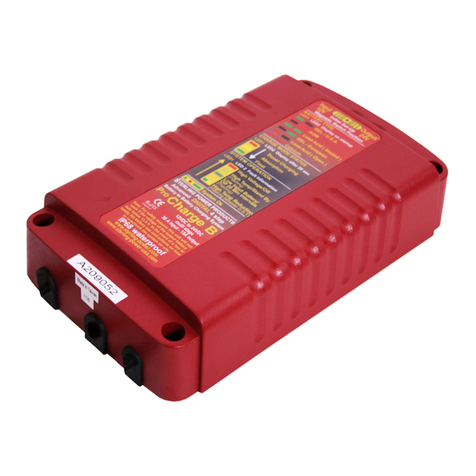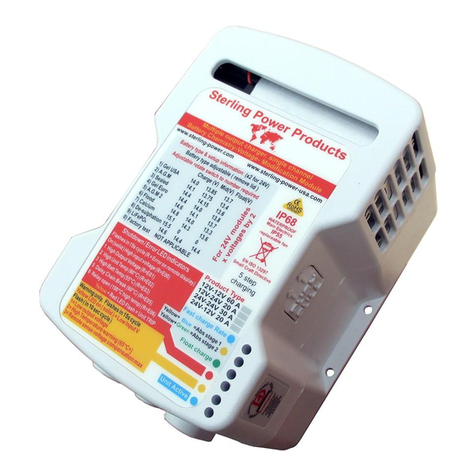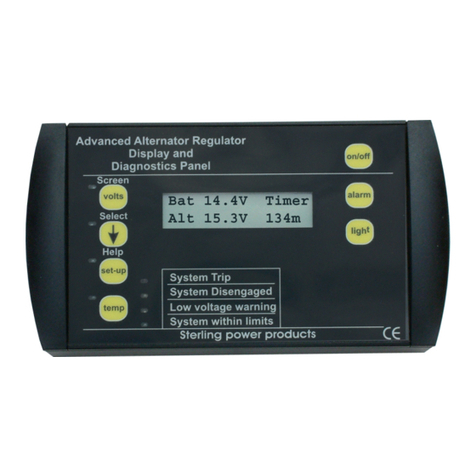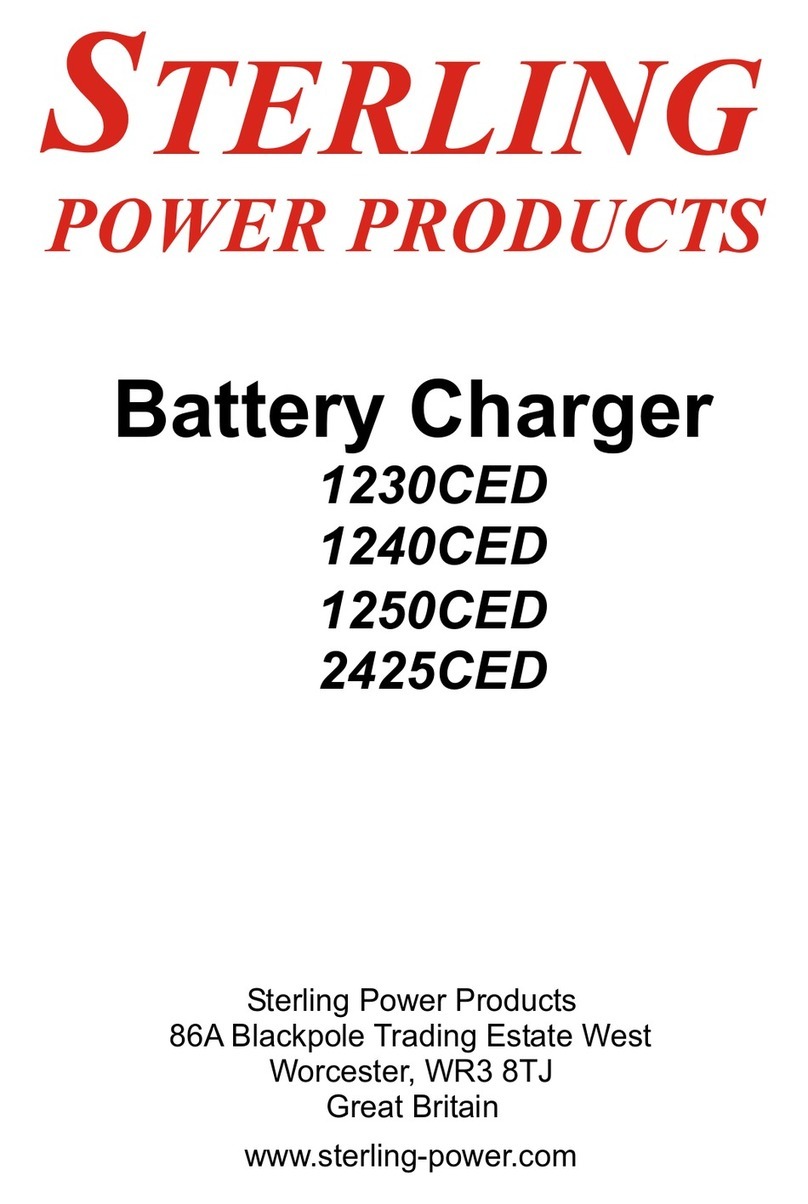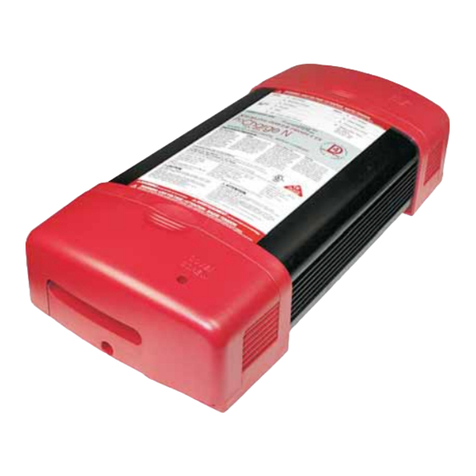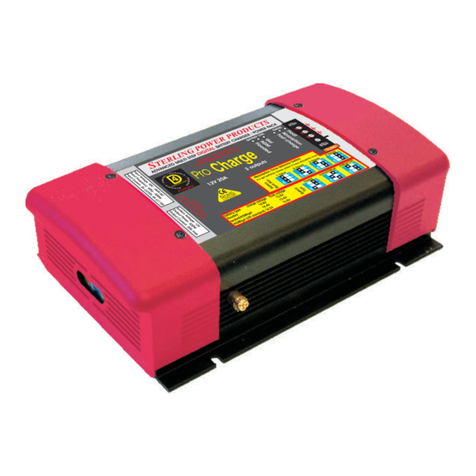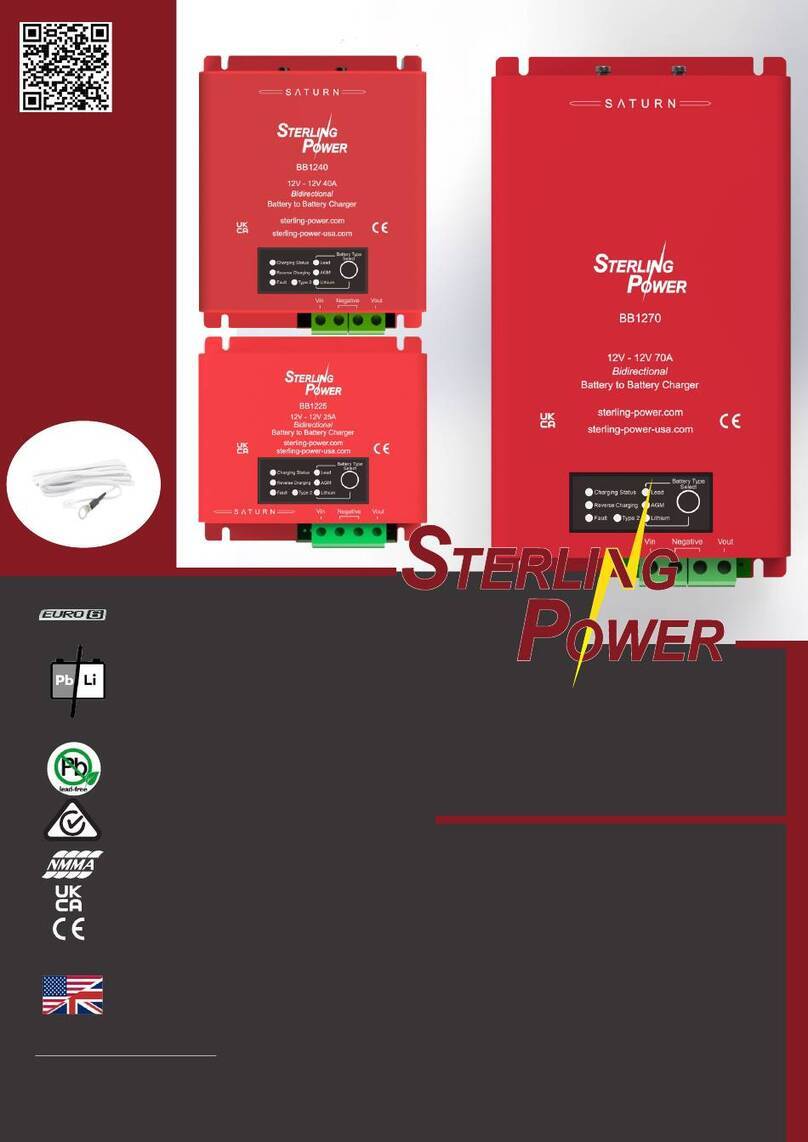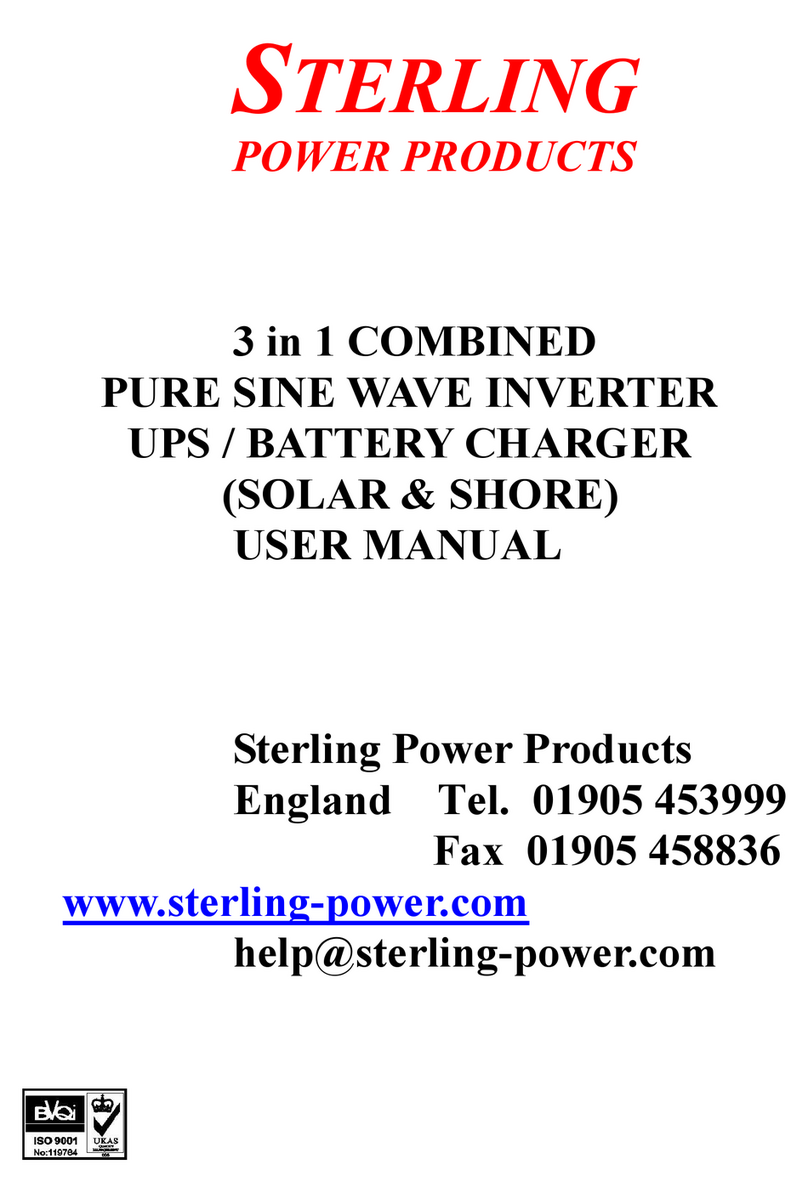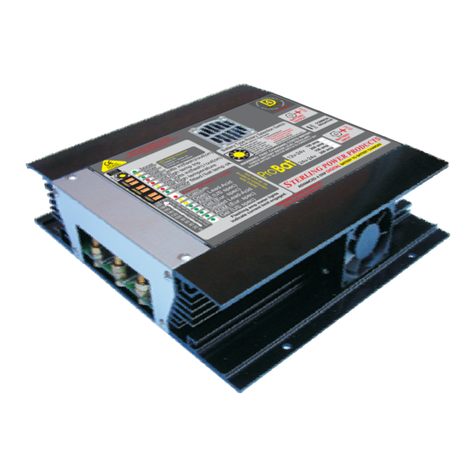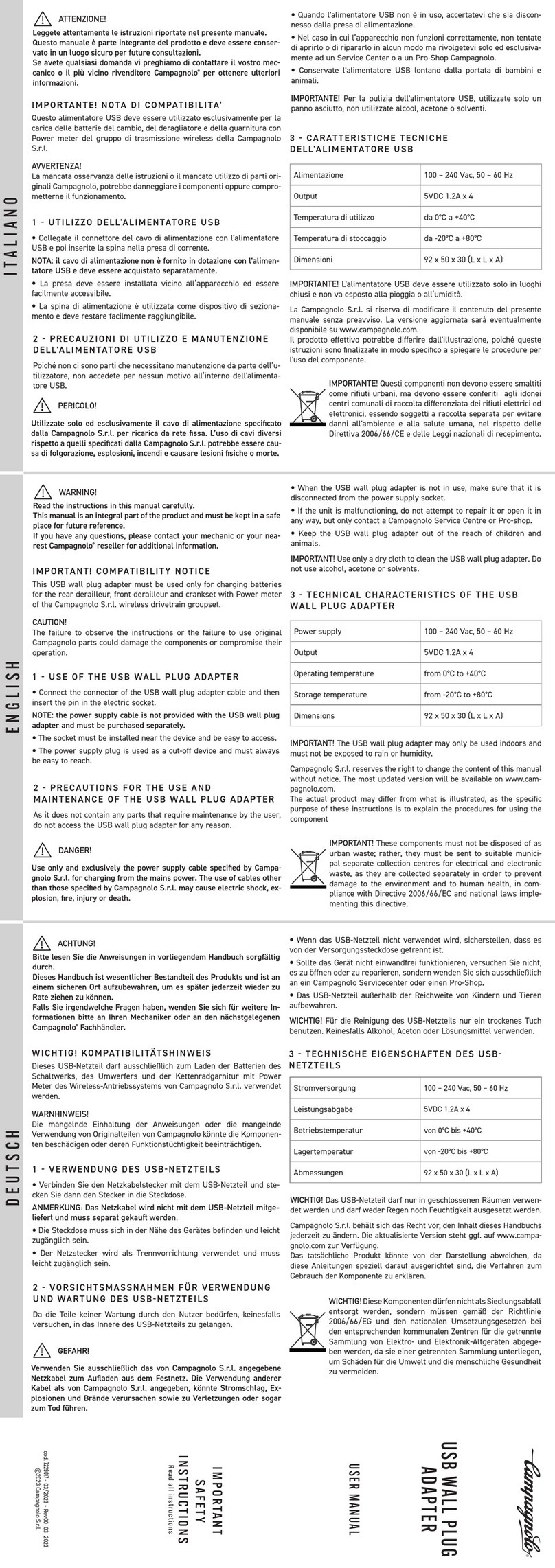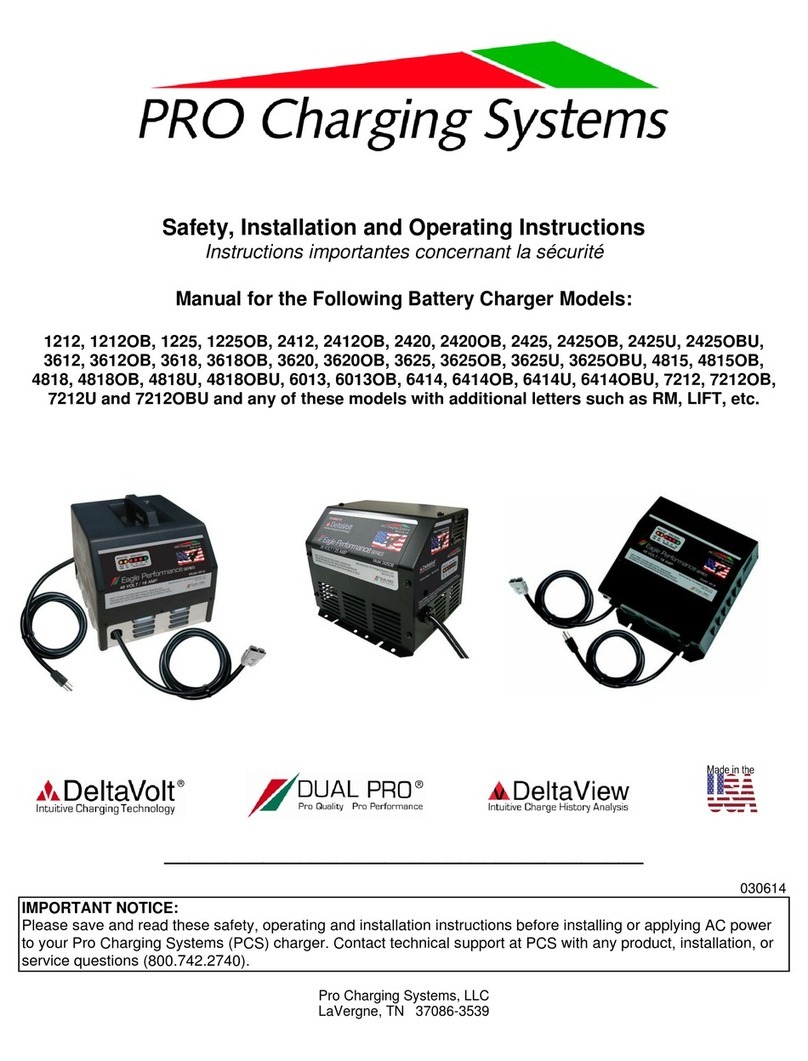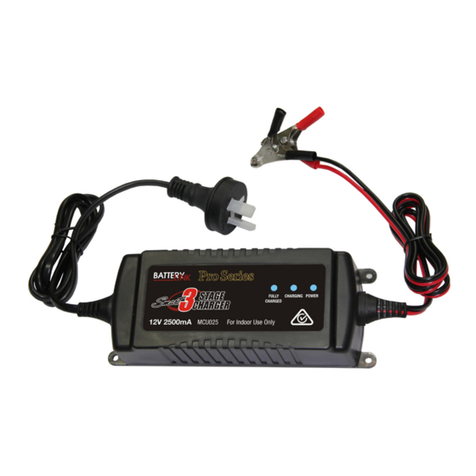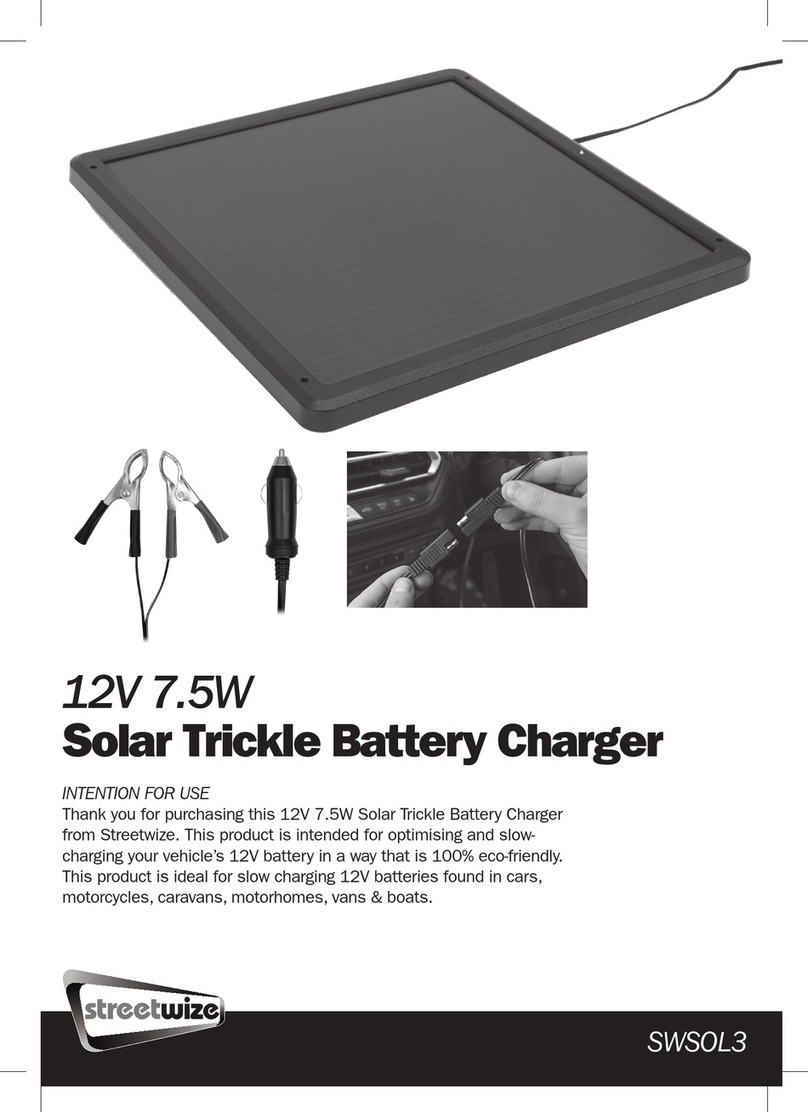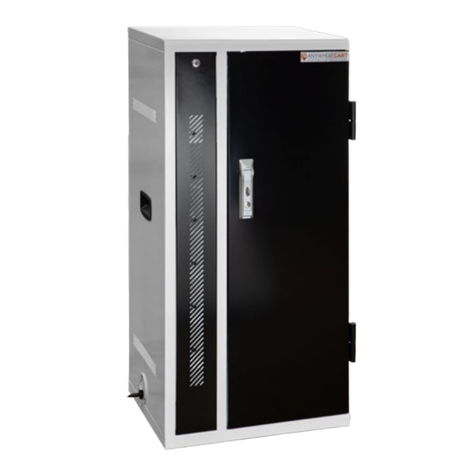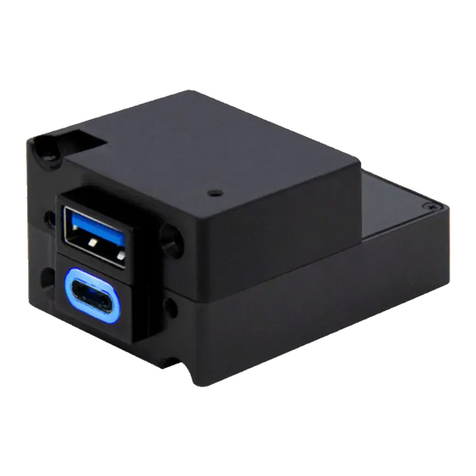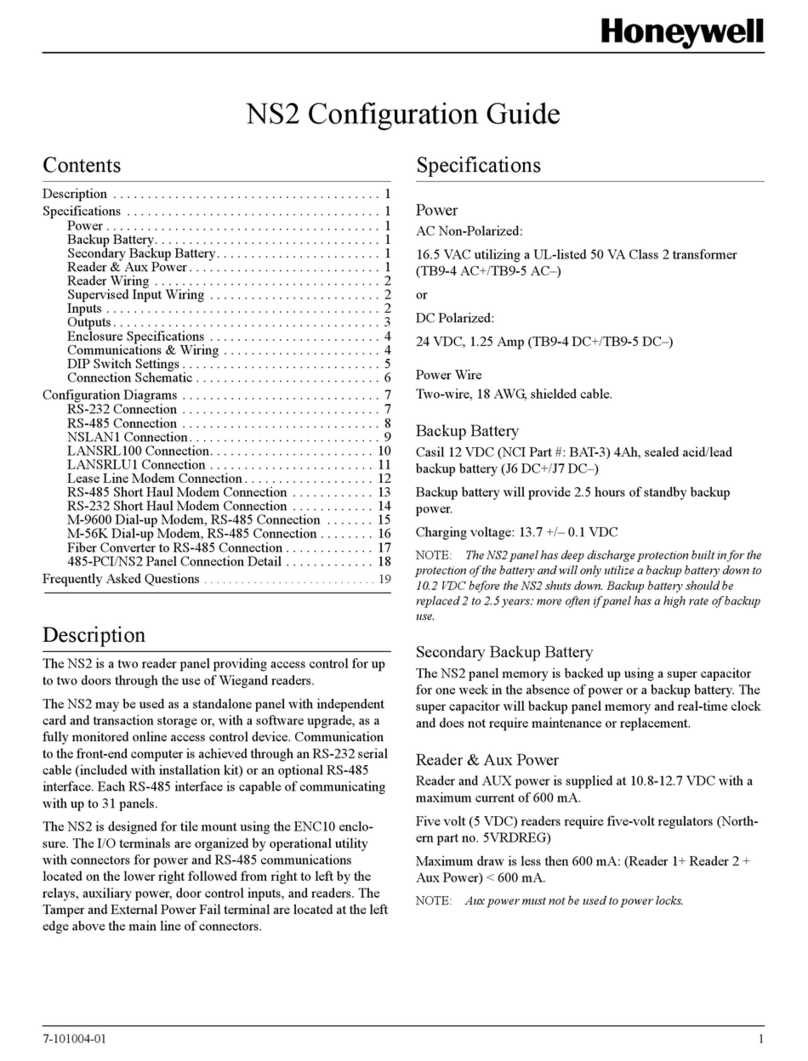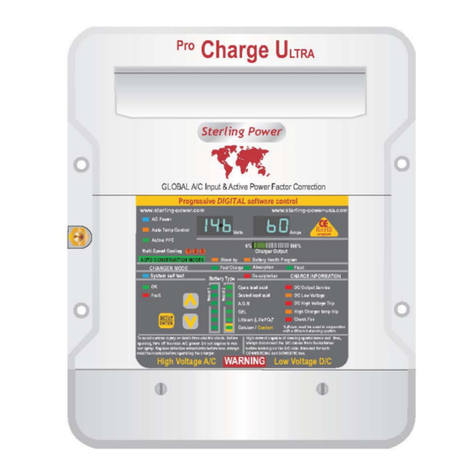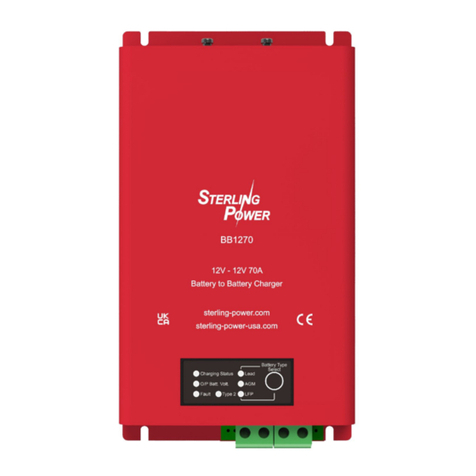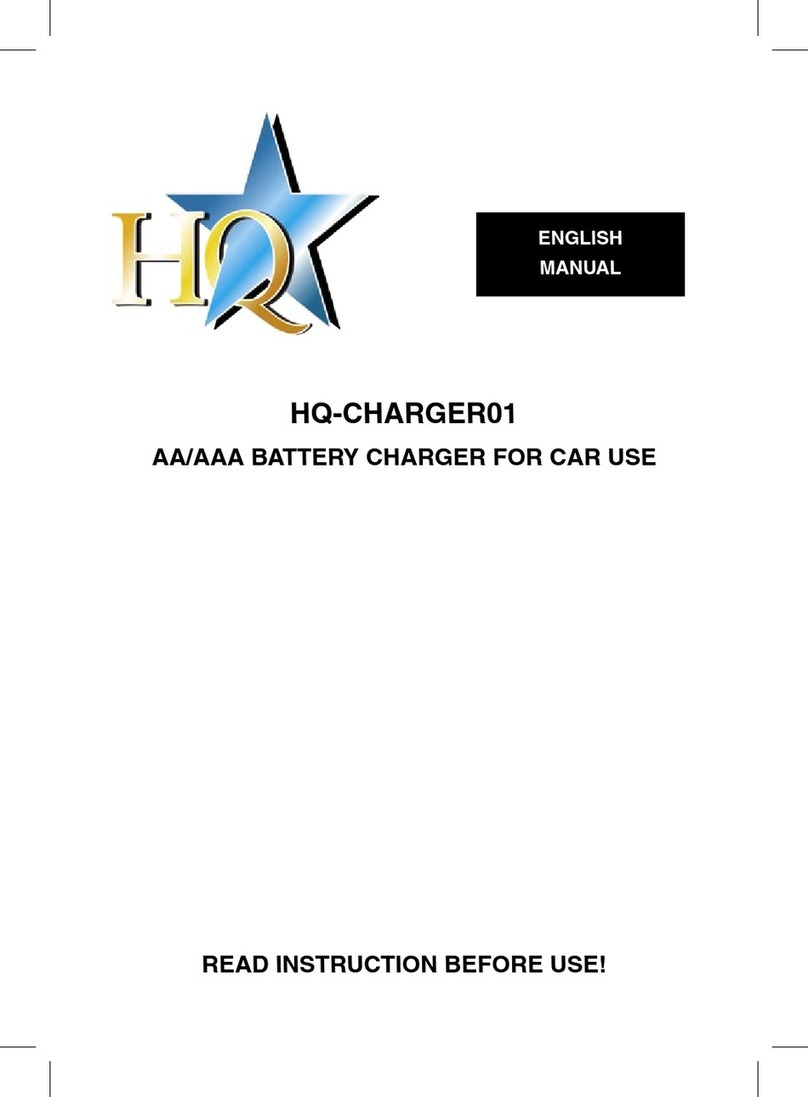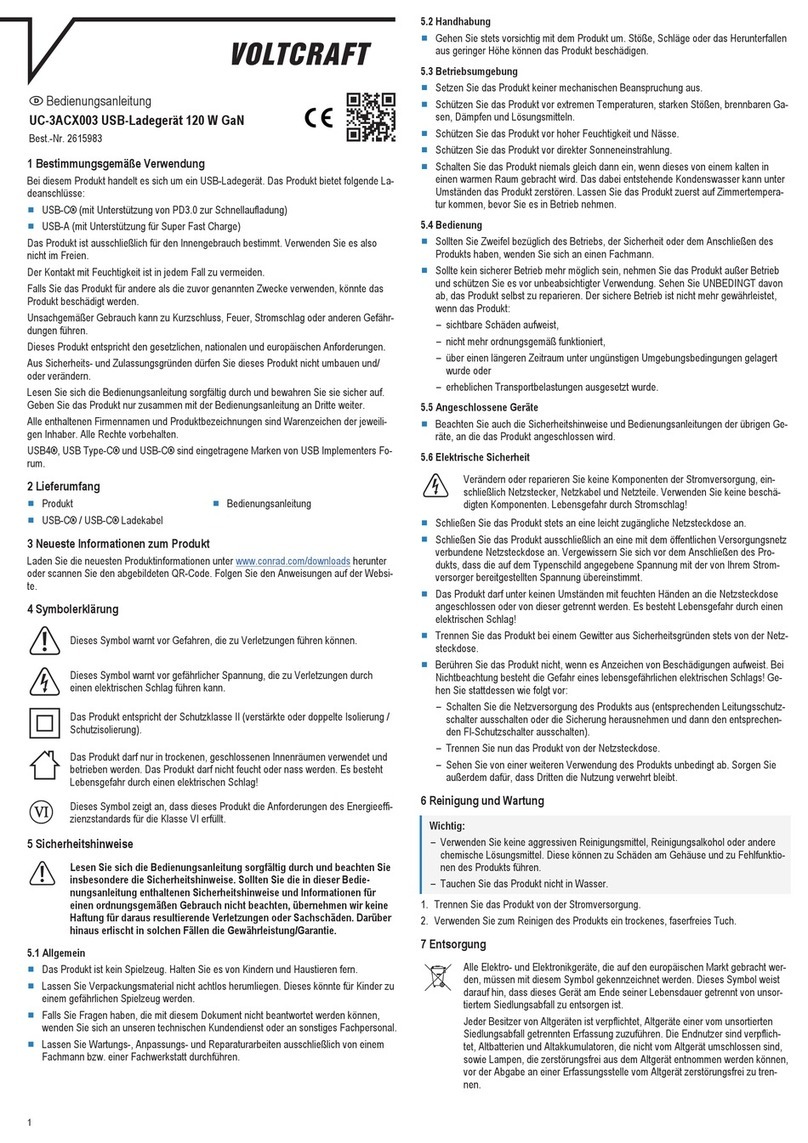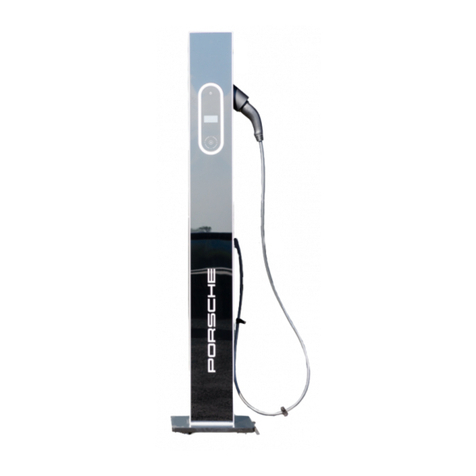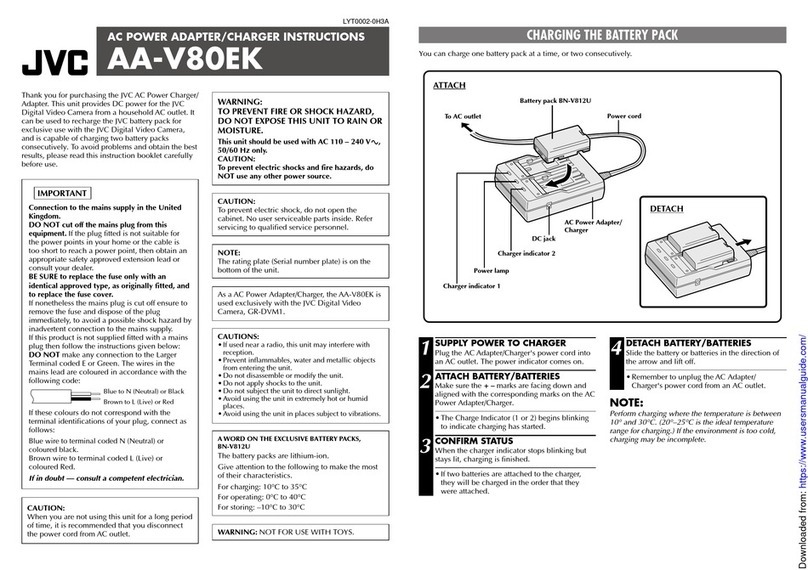
2 3
.
Thank you from all of us at Sterling Power Products and congratulations on your recent purchase of the
Aqua nautic On-board Marine Battery Charger.
For many years, Sterling Power Products has been a leading designer and manufacturer of marine battery chargers. We
have expanded our offering to include our latest line of ProSport chargers. Designed for the sport fisherman and
recreational boater, the ProSport series offers many features not seen in competitive chargers.
Please save an read this manual carefully and fully understand the safety instructions before installing your new Sterling
ProSport battery charger.
Before connecting your batteries or AC power, read all instructinos and cautionary markings on the battery charger and
batteries.
Use of attachments not recommended or sold by Sterling Power Products may result in a risk of fire, electrical shock or
personal injury.
Do not operate the charger if it has received a sharp blow, direct hit of force, has been dropped or otherwise damaged in
any way.
Do not disassemble the charger. Call the factory directly when service or repair is required. Incorrect assembly may result in
risk of electrical shock or fire.
To reduce the risk of electrical shock, remove AC power from the charger prior to any maintenance or cleaning.
To reduce the risk of battey explosion, follow these instructions and those published by the battery manufacturer, and of any
equipment you intend to use in the vicinity of a battery. Review all cautionary markings and labels.
Someone should be within the range of your voice or close enough to come to your aid when working near a lead-acid
battery.
Have plenty of water and soap nearby in case battery acid comes in contact with skin, clothes or eyes.
Introduction
General Safety Instructions
Personal Safety Precautions
CAUTION: To reduce the risk of injury, charge only lead-acid type rechargable batteries (open lead-acid, sealed lead-
acid, gel cell and AGM). Other types of batteries may burst, causing personal injury. The ProSport is factory set for
lead-acid batteries.
WARNING: RISK OF EXPLOSIVE GASES
Working in the vicinity of a lead-acid battery is dangerous. Batteries generate explosive gases during normal battery
operation.
Wear complete eye protection and clothing protection. Avoid touching eyes while working with a battery.
If battery acid contacts skin or clothing, wash immediately with soap and water. If acid enters the eye(s), flood eye(s) with
running cold water for at least 10 minutes and get medical attention immediately.
Never smoke or allow a spark or a flame in the vicinity of a battery or engine.
Be extra cautious to reduce the risk of dropping a metal tool onto a battery. It may spark or short-circuit the battery or other
electrical parts that may cause explosion.
Remove all personal metal items such as rings, bracelets, necklaces, watches, and jewellery when working near a battery. A
battery can produce a short circuit high enough to weld a ring or any metal, causing serious burns.
Use the unit for charging lead-acid batteries only. . Do not use the battery charger to charge dry cell batteries that are
commonly used with home appliances. These batteries may burst and cause injury to persons and property.
If necessary to remove a battery from a boat to charge, always remove the grounded terminal from battery first. Make sure
all accessories in the boat are off, as to not cause an arc.
Be sure the area around the charger and the batteries is well ventilated while the batteries are being charged. Gases can
be forcefully blown away using a piece of cardboard or other nometallic material as a fan.
Clean battery terminals with full eye protection to prevent corrosion from coming in contact with eyes.
Add distilled water in each cell until electrolyte reaches levels specified by the battery manufacturer. This helps purge
excessive gases from cells. Do not overfill. For batteries without caps, carefully follow the manufacturer’s recharging
instructions.
Study all manufacturer’s specific precautions, such as removing or not removing cell caps while charging, in addition to
rates of charge.
Extension cords should be industrial grade / heavy duty and grounded. Check extension cord before use for damage, bent
prongs and cuts. Replace if damaged.
Never charge a frozen battery.
Always make your extension cord connection on the charger side first. After connecting the extension cord to the charger
proceed to plug the extension cord to a nearby AC RCD-protected (ground fault circuit protected) outlet.
Always remove the extension cord from the AC outlet first when charging is completed, followd by unplugging the charger.
Thet charger is a fully automatic, electronic multi-stage on-board marine battery charger. It is prewired for easy installation
and is 100% waterproof for fresh and salt water applications.
The ProSport incorporates an extruded aluminium housing with plastic end caps. This design offers improved durability and
heat transfer while comparing it to full plastic case competitive products. The ProSport offers multi-stage charging which
includes a “float” maintenance mode that is safe for long and short term storage. ProSport can be left on indefinitely without
harming or overcharging your batteries.
TM
The DISTRIBUTED-ON-DEMAND multi-stage charging technology will automatically sense and distribute 100% of the
available charging amp output, i.e. 8, 12 or 20 amps (model specific) to any one bank or combination of all banks. Each
battery bank output is fully isolated.
Easy to view LED indicators will provide you with AC power on and charging status. The LED indicators can be seen from
the front and the side of the charger when installed.
The charger is available in different models and can be used in 12, 24 and 36 volt configurations (model specific) without
rewiring or switching. Just attach the DC output cable terminals as illustrated in the installation section of this manual.
With your Charger plugged in properly, it will automatically and fully charge your batteries while it conditions and extends
the life of your batteries. When you are not at the boat you can leave your charger plugged in to reduce sulfate buildup
allowing your batteries to be fully charged and maintained until your next boat trip.
Never charge a frozen battery.
Safety Precautions Prior to Charging Batteries
General Overview
Table Of Contents
Safety Instructions... pages 2-3
Overview... pages 3-4
Installation Guidelines... pages 4-7
Charging Your Batteries... page 8
Maintenance... page 9
Trouble Shooting... pages 10
Customer Service & Warranty... page11











